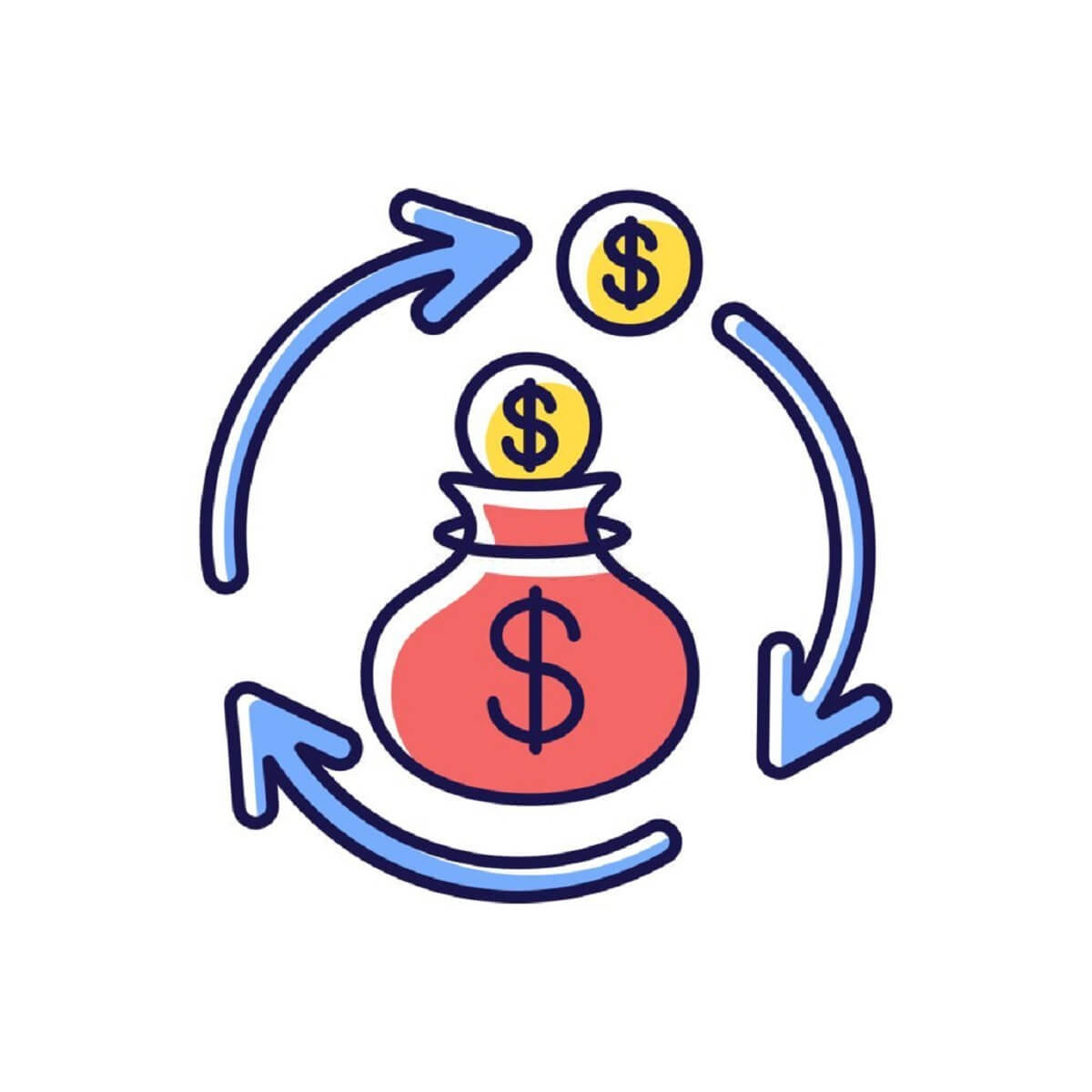Table of Contents
Profit tracking can help you make a data-driven decision to grow your business and become more lucrative. However, it’s a challenging task when it comes to calculating the profit margin, and most online merchants usually make these 5 common mistakes which we will mention later in this blog.
With these mistakes, your business could hardly stay lucrative and optimize your profit. So, we will introduce to you these 5 common mistakes and solutions to help you avoid them in this blog.
What is the profit margin?
It is the profitability ratio that determines how much money a business is making. It shows the proportion of sales that have generated profits. Simply put, the percentage represents how many cents of profit the business has made for each dollar of sale.

What is the profit margin?
For example, if a business achieved a 35% profit margin during the last quarter, it means that it had a net income of $0.35 for each dollar of sales generated.
There are different types of profit margins. However, in common use, it often refers to net profit margin, which is a company’s bottom line after all other costs, such as taxes and one-time charges, have been removed from revenue.
How to calculate a profit margin?
Now, you understand what profit margin is, but what are some practices for calculating the profit margin?
Profit margin is profit divided by revenue, and times 100. There are also the gross profit margin and the net profit margin with different formulas.
Let’s say your business makes $200,000 by cleaning houses. It costs you $80,000 to provide those services, so your gross profit is $120,000. You spend another $40,000 on operating expenses and $30,000 on taxes, so your net profit is $50,000.
Therefore, your gross profit margin is 60% (the equation is ($120,000/$200,000)x100.)
Top 5 mistakes to avoid when calculating the profit margin
The profit margin is often miscalculated. As a result, this could harm your business’s financial health as you spend more than you earn, resulting in mistakes in the long-term strategy.
But don’t worry! Here are the top 5 most common mistakes to avoid when calculating the profit margin.
1. Wrong approach to calculating profit margin
First and foremost, this is how you can calculate the profit margin with a straightforward formula:
| Profit = Revenue – Expenses |
Or, according to Neil Patel, the formula of profit margin is:
| Profit = Demand X (Revenue – Expenses) |
However, there are different profit margins: Gross, net, and operating profit margins. Each one has a different formula, so your comparison will lack nuance and isn’t fit for purpose if you get it wrong.

Beware of the wrong approach when calculating the profit margin
Moreover, profit margins and markups may sound the same but they’re totally different. Most profitability ratios in financial statements are based on total sales. If you consider markups to be profit margins, companies will lose money and possibly their business.
For example, if you have a product having a unitary cost of $25 and you’d like to entitle a gross profit of 30%, you may price it as follows:
| $25 x 1.3 = $32.50 (considering no taxes are eligible) |
Unfortunately, this formula is a 30% markup and not a 30% gross profit margin. The correct result when calculating the profit margin is:
| $25 / (1-0.3) = $25 / 0.7 = $35.71 |
In short, markups always generate fewer profits than profit margins. They are generally used to calculate a return on investment, a bank interest, or an added tax, while profit margins are used to calculate a percentage of revenues.
No matter what formula you use to calculate profit, there’s a lot more to consider other than simple mathematics. If just one of these factors is miscalculated, it can cause disastrous consequences for your business.
To explore different types of margins, you can read them here.
- How to avoid this mistake?
To make it easier when calculating the profit margin, you can use an automated Shopify profit calculator, such as the TrueProfit app, which collects every data point that affects your profitability including:
- Cost of goods sold (COGS)
- Ad spends from multiple channels – Google, Facebook, TikTok, Pinterest, Amazon, etc.
- Transaction fees for each payment gateway
- Shipping costs
- Custom costs
By having all order metrics in one place, you can stop wasting time switching back and forth between financial reports.
Track all your Profits & Losses in real-time

2. Mistaking income for profit
Big sales and income are often misleading. Let’s say your store sells a huge quantity of products, and you will surely receive a lot of money. However, do you know how much is going out?
In other words, what is your profit after deducting the costs and expenses?

Big sales and income are often misleading and make you forget about calculating the profit margin
Imagine you own a store that sells phone cases. You sell each case for $5. The new iPhone 14 has been released so your cases are a hit. So, you manage to sell your 10,000 items in the first month. At the end of the first month, you’ll receive an income of $50,000!
That’s very impressive, but the problem is that you may easily get distracted by the money rolling in, and forget to mention the costs.
After a few months, you become aware that you have a cash flow issue. The problem is, how much did it cost you to earn this $50,000 monthly income? After deducting all of your setup and running expenses, you may end up with a zero to even negative profit margin.

After deducting all of your expenses, you can end up with a low-profit margin
As a result, it seems expensive to create and customize phone cases, let alone the shipping fees, payment processing fees, and taxes.
- How to avoid this mistake?
So where did you go wrong? Actually, in order to become a profit-focused business owner, you should always track business metrics and prioritize maximizing profits.

Tracking business metrics is important when calculating the profit margin
The good thing is you can easily achieve this goal by using data to help you make the right decisions for your business.
3. Underestimating/Not tracking all expenses
Underestimating expenses will certainly cause inaccurate profit calculations. Since there are so many obvious and hidden costs, it’s not surprising that you may miss some of them.
These are 2 typical costs that online sellers forget to track or don’t keep track of: Returns & Refunds and Payment processing fees.
Returns & Refunds – Free returns or exchanges are the second most important reason why people shop online.
62% of consumers say that they will buy again from a seller that offers free returns so it’s important to display your free returns policy prominently on your website, product pages, and online ads.

Returns and Refunds – Calculating the profit margin
Once you decide to offer free returns, there are a couple of costs that you’ll incur: return shipping cost, refund fee, and costs to restock and dispose of the item.
Payment processing fees – Online sellers must accept this cost as there’s no way around them.
Although this type of fee is not large, it can take up a small percentage of your profit margin. Payment processing fees include bank fees, credit card fees, and even the payment processor’s fees.
Therefore, you should notice these small cumulative costs when calculating the profit margin.
- How to avoid this mistake?
Don’t worry, we have some solutions for you to overcome this:
- Use a Shopify profit calculator that incorporates automated accounting for returns and transaction costs.
- Offer a long return window to minimize returns
- Add more product details, videos, and reviews to your site to set accurate customer expectations and reduce the return rate
- Understand your processing fees so that you can factor them into your profit margin
4. Underpricing or overpricing your products
Calculating the profit margin involves pricing your products, but setting a fair price can be challenging. On one hand, you want to sell more products by giving a low price. On the other hand, you want to sell at a high price to achieve a higher profit margin for a product. As a result, you may encounter these 2 mistakes when setting your price.
Underpricing – Many sellers want to gain market share by underpricing the competition. In reality, this may harm your business.
You need to sell at a very large quantity to become profitable because a low price means a thin profit margin. Furthermore, your customers tend to view your products as inferior in quality.
Overpricing – Setting your price too high can make your customers turn away from your products. Unless your premium price is based on real additional value, you should not price your items too high.
- How to avoid this mistake?
Compete on value – First, you need to find the perfect price point for your target market by researching the market, your competition, your target customers, and your business model.

Competing on value reduces the pressure of cutting costs when calculating the profit margin
Next, you have to conduct research to find out what your customers will be willing to pay for the value you offer. By doing this, you can avoid competing on price because your products are different from and superior to those of your competitors.
Analyze profit trends – By tracking the business data over a period of time, you’ll figure out what you should adjust to optimize your profits, and whether you can raise your price.
5. Failing to utilize tools or services
If online merchants always focus on minimizing costs, they could neglect to invest in a tool or service that saves money and increases profits in the long run. Therefore, you should continue tracking your earnings and profits to become and stay more lucrative.
- How to avoid this mistake?
Investing in tools is the optimal solution to deal with this problem. They can support your business to grow more effectively, such as keeping track of all costs, monitoring your store performance, calculating credit card fees, and more.
There are apps that include the above features, they are TrueProfit by OneCommerce, BeProfit, and Profitario. To learn more about these tools and apps, you can read them here.
Final words
Calculating the profit margin correctly will benefit your long-term business strategy and financial health. That’s why you need to avoid these 5 mistakes to help your business stay lucrative and maximize profit.
As a user, you now have all the tools to calculate your business’ profitability in one place, so that you can evaluate your company’s finance better and increase your income.


